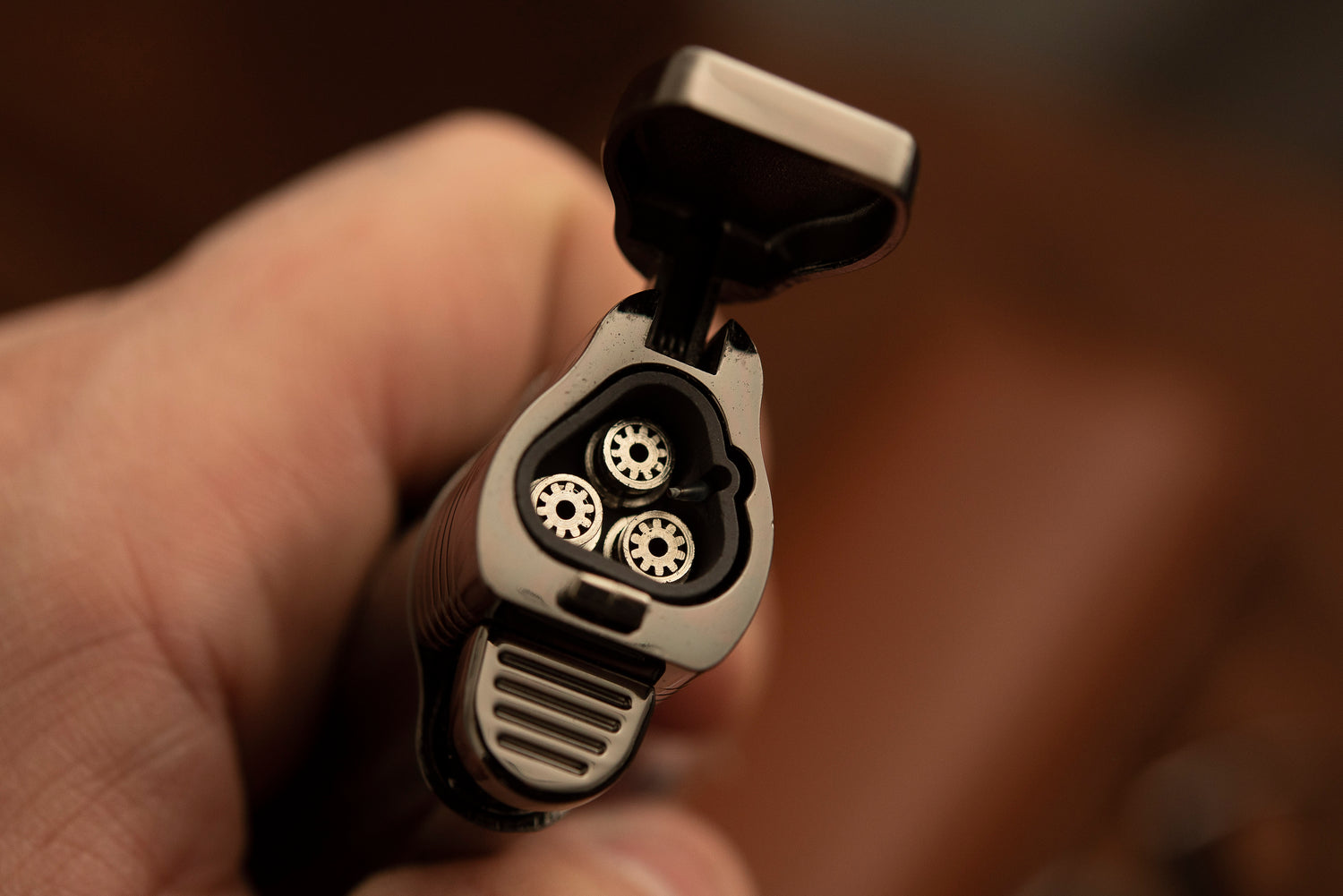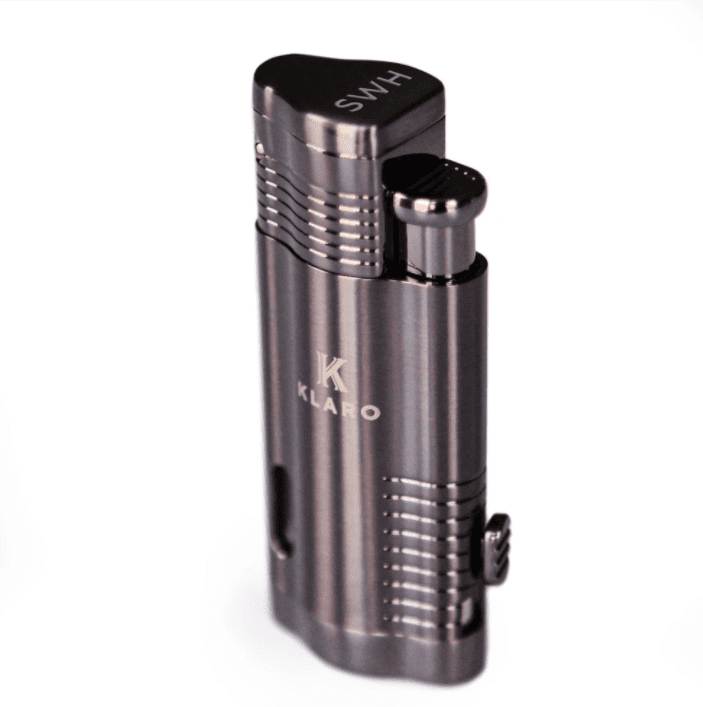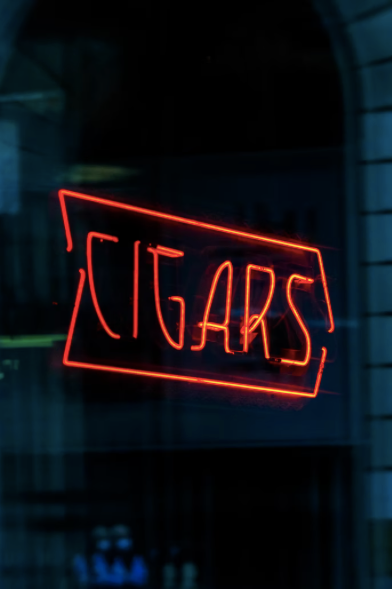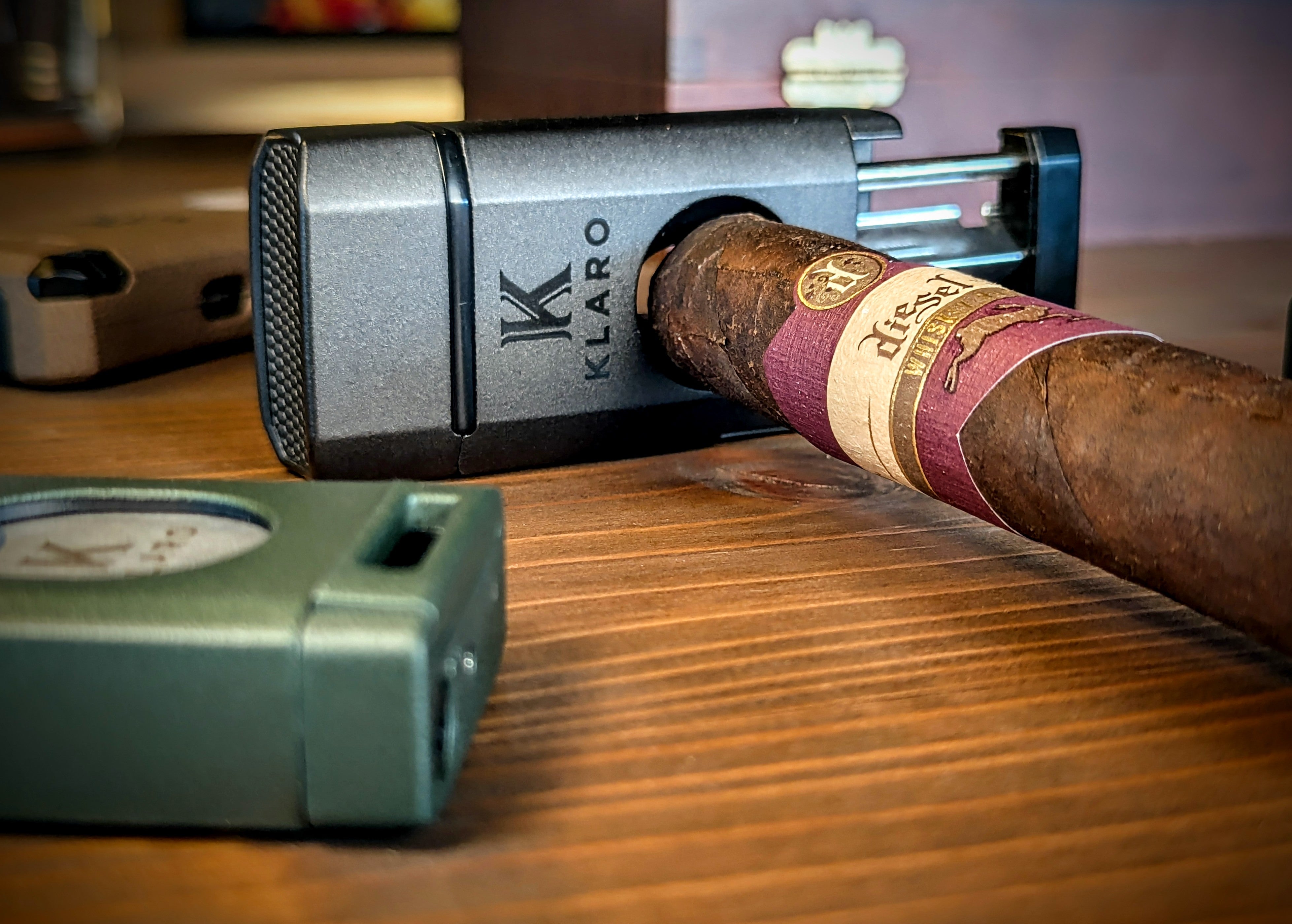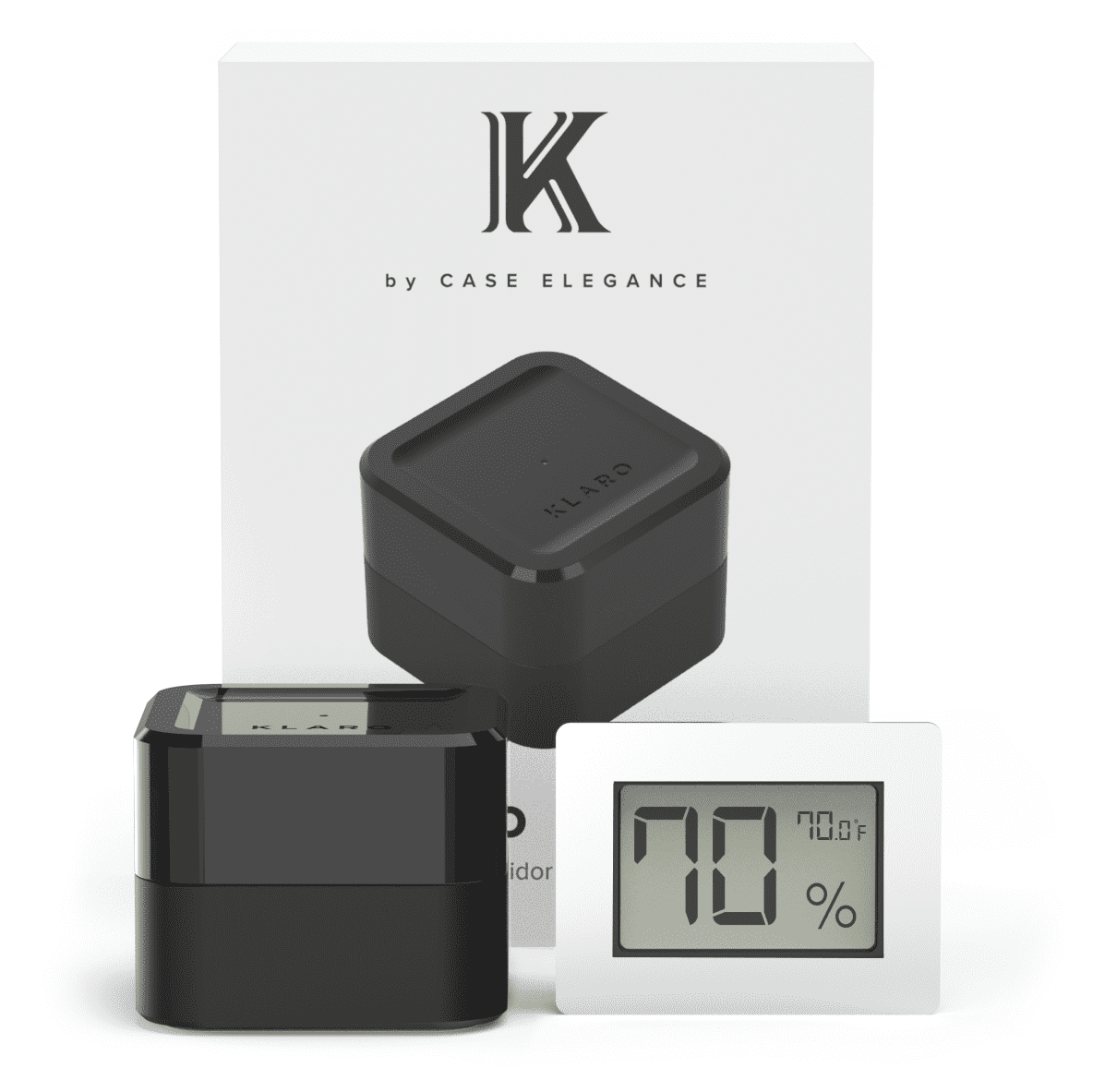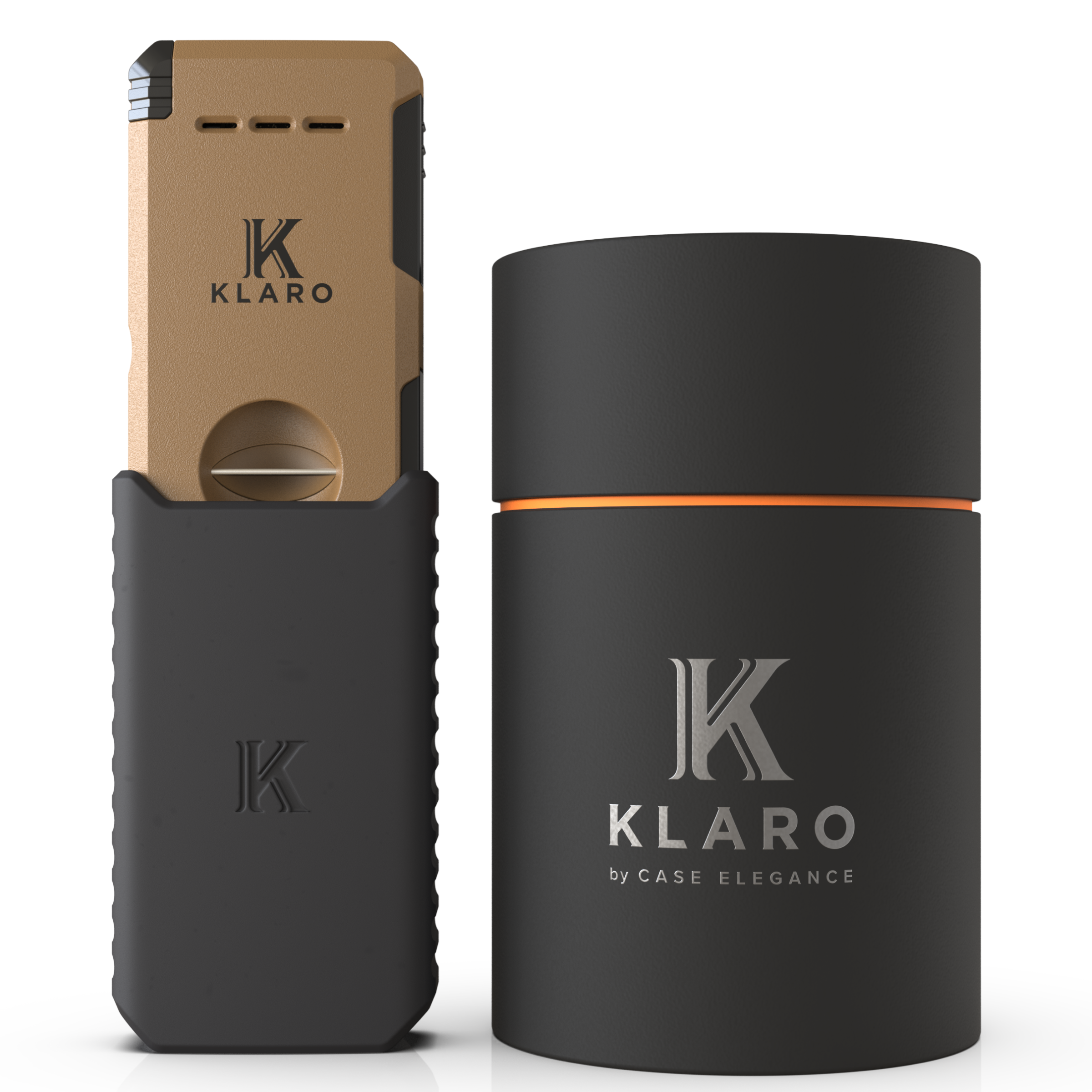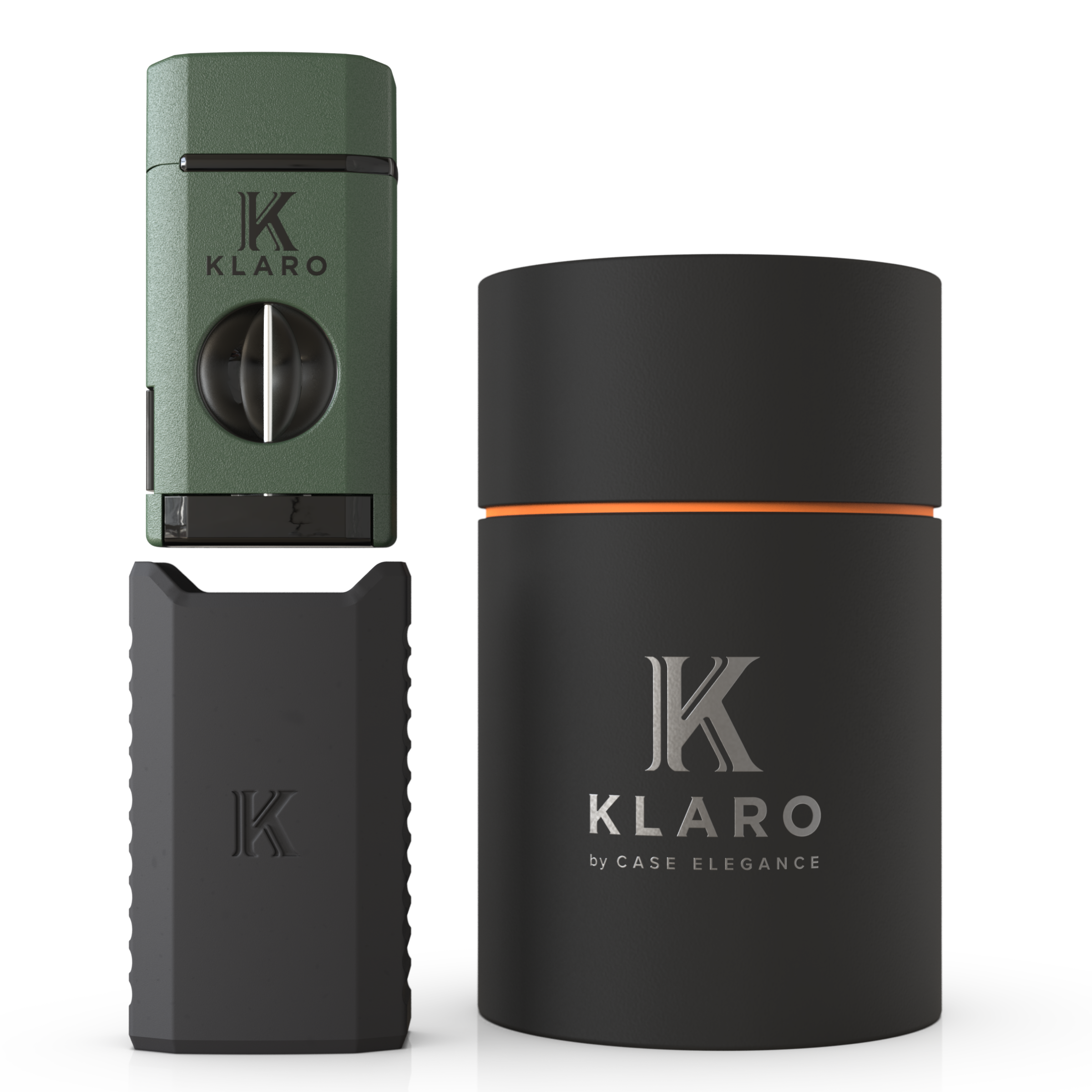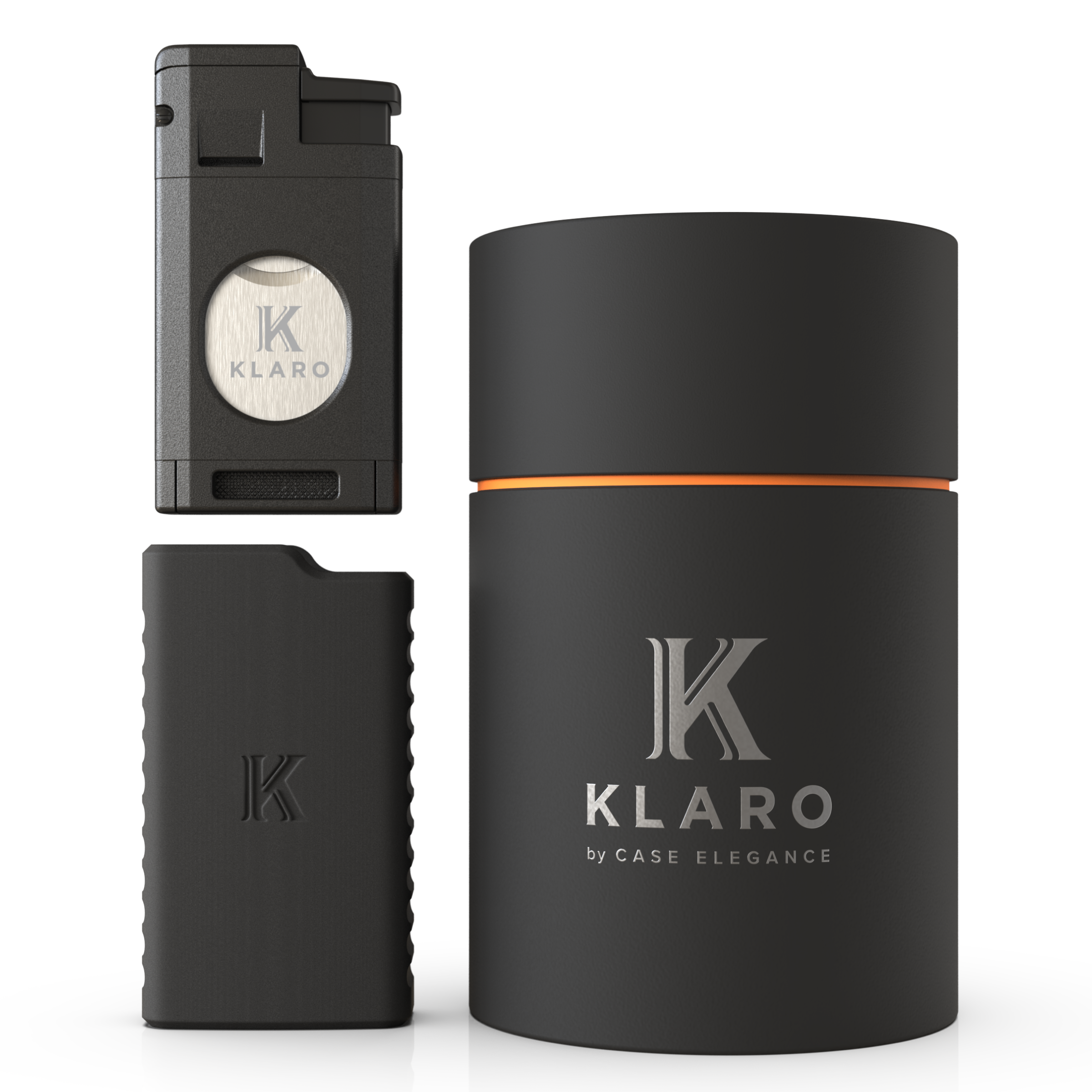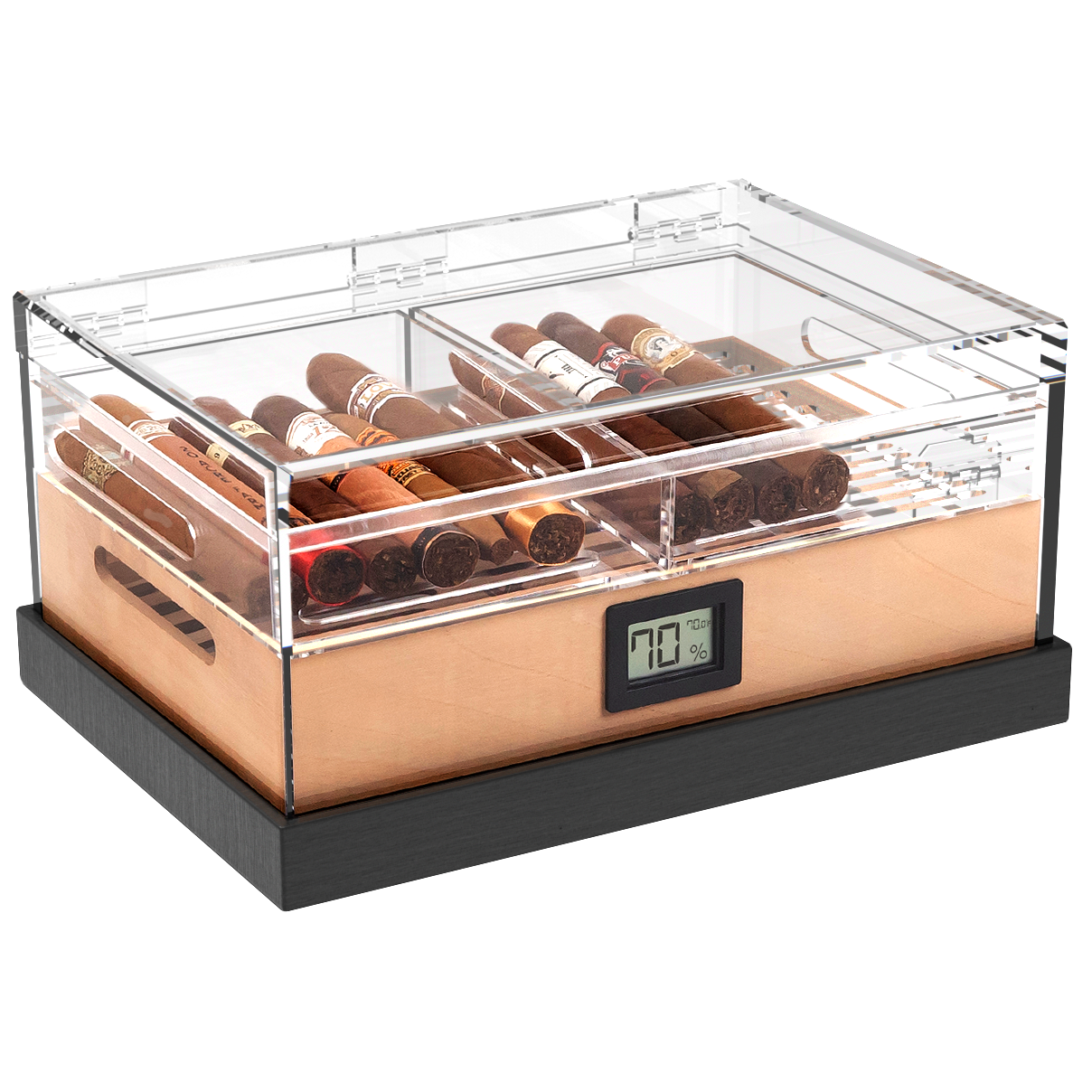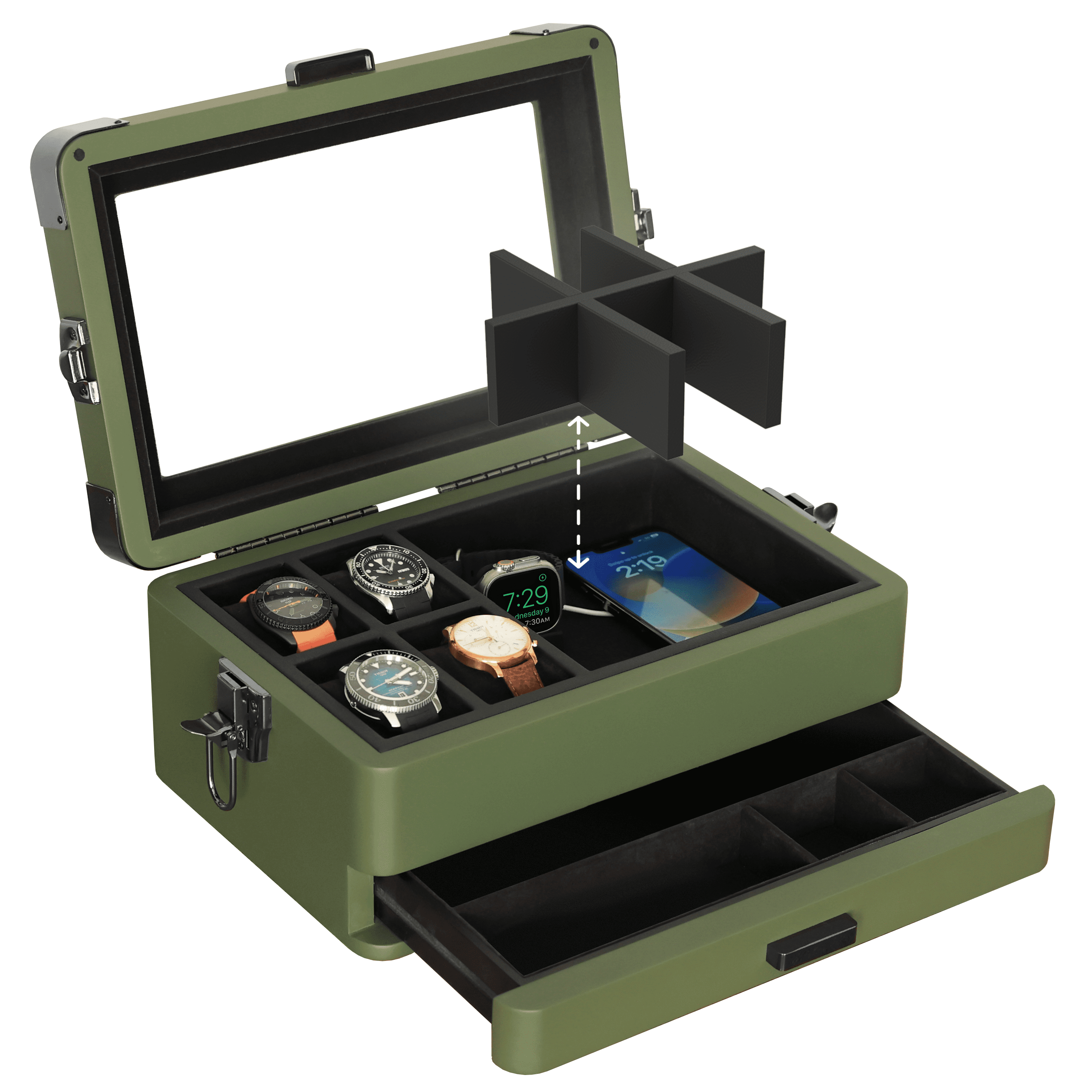For a cigar enthusiast, few things are worse than an unevenly lit cigar. Whether because of a fast burning match or a low flame lighter, once the uneven burn begins, it’s hard to correct. And then you’re stuck spending the duration of the cigar relighting, working the cigar too much, creating too hot a coal, and spending more time worrying about correcting the uneven burn than you are enjoying the cigar.
This is what also ruins the smoking experience for many first-timers: already somewhat intimidated by the process, a poorly lit cigar will leave them wondering what they’re doing wrong, why they can’t keep their cigar lit, and what the entire point is if they can’t produce the kind of good-tasting smoke we value as cigar smokers.
Given that a well-lit cigar can define the smoking experience, cigar enthusiasts use a lighting tool that ultimately produces the best burning experience: que the torch lighter. This lighter is a major step above the rest, creating a consistent, adjustable flame you can apply with precision, creating a better smoking experience.
For cigar enthusiasts, the torch lighter is just as much a necessity as a good humidor or a cigar cutter.
Because the torch lighter is such an integral part of a cigar enthusiasts tool kit, we want to do a deep dive into torch lighters: what they are, how they work, the types available to you, and why you should always have one at the ready if you plan to smoke cigars on any kind of a consistent basis.
What Is a Torch Lighter?

Torch lighters have become a mainstay for cigar smokers. And while a match or standard lighter might suffice in a tight spot, veteran cigar enthusiasts prefer a good torch lighter. Nearly windproof, adjustable, and producing heat up to 2,500 degrees Fahrenheit, torch lighters outmatch any other lighting source when it comes to cigar smoking, specifically.
These powerful lighting sources use pressurized butane and piezo ignition to create an air-propelled, ultra-hot flame perfect for lighting cigars.
Different from your standard Bic lighter that offer an inconsistent, dancing flame, torch lighters are designed to offer more control both over the consistency of the flame, as well as the amount of heat and flame you produce.
The torch lighter also uses a more refined fuel source, differentiating itself from other standard flick-lighters that use unrefined butane that causes soot, produces odors, and can potentially affect the taste of the cigar.
What’s So Good About Torch Lighters?
To understand why torch lighters are a good choice, you need to understand how a cigar tends to burn. A common mistake made by many novice cigar smokers is to use the heat and roar of a torch lighter to scorch the foot of the cigar, incinerating good quality tobacco and ruining at least the first few puffs from your cigar.
You want to expose the foot of your cigar to even, consistent heat. That means using your torch lighter precisely, creating enough space between the flame and the cigar to develop an even burn and to avoid scorching the tobacco.
And they’re helpful beyond the initial lighting. Torch lighters can also help remedy common problems you’ll face while smoking, including “canoeing” or “tunneling”. These issues occur when the smoker is inhaling too frequently, or if the cigar itself has a defect and one side of the cigar is burning quicker than the others. In both scenarios, the smoker is facing an uneven burn, and a torch lighter can help you light certain segments of the cigar to create a more even, natural burn.
Types of Torch Lighters

Similar to other cigar and humidor accessories, the torch lighter comes in a variety of types and styles. Some of these options feature aesthetic differences, others practical. But let’s start with the types of torch lighters that are typical sources of discussion and debate among cigar enthusiasts. Primarily, the number of jets.
Single Jet
While not necessarily the standard, the single jet is where it all starts for torch lighters. Here you have a direct, constant source of heat and flame issuing from a single nozzle. Single jet torch lighters will oftentimes come in a pen style, which can be more discreet and less bulky in the pocket.
Many cigar smokers will prefer a single jet over multiple jet options because they prefer the degree of accuracy they can get from a single source, allowing them more control over what portion of the cigar gets lit. It can also be used for “touch-ups,” when a portion of your cigar doesn’t burn evenly due to a variety of factors, including quality.
Double Jet
An interesting downside of the single jet torch lighter: all the heat and flame is directed at a single point, which produces a higher heat level at a very specific placement. You want an even distribution of heat and flame. The larger the cigar, the wider the spread. Adding an additional nozzle helps.
The double jet lighter is a good step up when you want to spread out the source of the heat. Instead of your flame firing from a single nozzle, you produce two sources, effectively spreading out the distribution of heat and flame. For small to medium sized cigars, the double jet is a great choice.
Triple, Quadruple, Etc.
You’re seeing the pattern. Essentially, the more jets you add to a given torch lighter, the wider the span of flame sources, which is important for several reasons. Triple jet torch lighters—or even quadruple jet—should be used when you smoke a wider cigar. Cigars are measured in how many rings they have: one ring is the equivalent of 1/64 of an inch. So a 50 ring cigar would equal 50/64 of an inch.
Of late, cigar manufacturers have been producing certain cigars with larger and larger ring sizes—even exceeding a 70 ring cigar. A multiple-nozzle torch lighter will allow you to light those larger cigars with a more even, consistent flame. Some smokers would prefer a single jet lighter in these situations so they can control the burn over a large area, but triple and quadruple jet torches can be helpful if you’re smoking large cigars and want to speed up the process.
Soft Flame Lighters
While torch lighters maintain the popular vote among cigar smokers as the best method to light cigars, there are those who still prefer soft flame lighters that don’t carry the same blowtorch effect as a torch lighter. Zippos, Bics, and other similar gas station lighters are included in this category. Soft flame lighters don’t fare well in windy weather, but some still prefer the sensation of being able to light their cigar by puffing on this flame.
If you decide to go this route, keep your fingers clear of the lighting wheel and other metal parts of the lighter, as these become extremely hot when exposed to the flame for that duration.
Flat Flame Lighters
One of the newest types of lighters to reach popularity among cigar enthusiasts, the flat flame lighter uses a similar process as a torch lighter, but it produces a unique flame shape. The “flat” flame is supposed to provide a consistent lighting surface for the foot of the cigar, creating an even burn. Similar to the torch lighter, these are also wind resistant.
Torch Lighter Components
The more you know about your hobbies and passions, the more you value and enjoy the experience. Equip yourself with a well-rounded understanding of a torch lighter’s components for three reasons:
First, so you can properly maintain and refuel them, ensuring you can responsibly make them last longer by knowing how to work with them. Secondly, so you have a better understanding of what to look for when shopping for a high quality torch lighter. And lastly: the more you know about your torch lighter, the more effective you’ll be using one to create a steady, even burn on the cigars in your collection.
Fuel Tank
The fuel tank of a torch lighter stores the butane in liquid form. This takes up the bulk of the lighter and releases portions of the butane in gas form when the user activates the release and spark button.
Keep tabs on your fuel tank to ensure you never run out of fuel for your torch lighter. As you use your personal lighter more frequently, you’ll get a better feel for how long you have before you need to refuel, but that can also vary widely based on how high of a flame you’re using, what outside conditions are causing you to use a higher flame, like weather, and how many jets your particular lighter has. More jets equals a faster use of fuel. For this reason, consider purchasing a torch lighter that includes a fuel window.
Fuel Window
Some torch lighters will include a fuel window so users can better monitor the amount of butane they have remaining in the fuel tank. Once you get used to using a torch lighter instead of a match or soft flame lighter, you don’t want to get put in a situation when you run out of fuel and have to use alternate sources.
Spark
Standard Bic and Zippo-style lighters use a flint wheel as their striking method to create a spark and create a flame with the butane released from the fuel tank of the lighter. This is the flint wheel that produces the flicking noise we’re used to hearing from those lighters. Torch lighters have a different lighting mechanism.
Most torch lighters use piezo ignition, in which a small hammer in the lighter strikes a piezoelectric crystal—typically quartz—to produce an electric spark that will light the butane gas being evenly released from the fuel tank. When the quartz crystal is struck, it sends an electric current through a wire to meet the fuel at the nozzle(s) to produce an even flame. These have been the standard for cigar lighters because they are generally windproof, can last for thousands of strikes, and don’t easily break.
A third and most recent option for creating a spark has been lithium ion battery torch lighters. Similar to piezo ignition lighters, these use an electric current to create a spark and produce a flame, but they claim to have an easier push-button mechanism than piezo lighters require. The downside, however, is that these are charged with a USB cord, and you’re not always aware of when your battery is low, opposed to a piezo ignition torch lighter.
Protective Cap
One of the more important components of the torch lighter is the protective cap that covers the nozzle(s) when not in use. This is especially important to prevent accidental ignition for any reason, and it also prevents potential burning after using the lighter. Because torch lighters burn so hot, 2500 degrees Fahrenheit, the metal around the flame nozzles will become extremely hot, and the protective cap keeps you out of danger and discomfort.
Adjustable Nozzle
If you’ve ever seen someone try to light their cigar with the full strength of their standard lighter or their torch lighter, not only do they look ridiculous, but they might actually be damaging their cigar. When lighting a cigar, you should look for heat, not flame.
Too much flame can actually scorch the leaf, which will change the overall taste of the cigar, often creating a bitter taste. The metaphor here is grilling: you want the strong, even heat of the coals rather than sporadic burning which will make your food taste bad. It’s important to use a torch lighter that has an adjustable nozzle, and you need to become familiar with just how much strength to use with a given cigar.
What to Look For in a Torch Lighter
The first choice you really need to make comes down to jet number: with the size of cigars you typically enjoy, what jet number would have the best ability to create an even burn on your cigar? As mentioned, some cigar enthusiasts prefer a single jet for larger cigars, so it’s important that you try a few out to see what you like. If, for example, you enjoy all different sizes of cigars, you might want to invest in a few torch lighters.
Ultimately, your preference should be the North star when it comes to choosing the torch lighter for you. But consider the variety of choices at hand.
Aesthetic
Your torch lighter should feel good in your hand and in your pocket, and it should match the aesthetic you convey with the rest of your cigar accessories. The weight of it is important, and you want it to feel heavy enough to be formidable but without weighing down your pocket.
Visually, torch lighters can vary by color, with some appearing plastic, fun, and with bright neon colors. Others display a more formal, elegant look. These are your more traditional styles—gunmetal or stainless steel. Consider matching the style of your torch lighter with the style of your humidor or cigar cutter.
Style
From sleek and elegant to an adapted classic Zippo look, from single jet to quadruple jet, from skinny and pen-shaped to large and horizontal-facing—styles of torch lighters vary, and it’s your choice at the end of the day what works best for you.
Keep in mind unique offerings included with some torch lighters, like certain torch lighters that will feature a built-in cutter or punch, so you have the two-in-one option. While handy, these can feel a bit kitschy, so if you still want to go the traditional route with a separate cutter and lighter, consider a bundle like this from Xikar so the two match in style.
Size
As you peruse the different styles and types of torch lighters, keep in mind size: where will you be using the lighter most, and how does its size play out with travel, storage, and general bulkiness. For example, some torch lighters will be so large that they won’t easily fit in your pocket. While these might be nice to keep around the porch at your home, you wouldn’t want to travel with that or bring them to your local cigar bar.
A good torch lighter should fit nicely in any humidor drawer, and it should never feel like a burden.
Types of Torch Lighter Fuel
Unique to torch lighters, they burn a cleaner flame, and you’ll often hear cigar enthusiasts complain about other lighters due to the odor produced, or even the color of the flame. Both are primarily due to the fuel source.
An unrefined fuel source, or a poor fuel source, can affect the smell and taste of your cigar, as well as the temperature of the flame. That’s why it’s beneficial to understand how lighters were developed, the fuel they use now, and what fuel torch lighters use and why.
A Brief History of Lighter Fuels
A series of inventions and discoveries in the late 19th and early 20th century led to the popularization of the lighter on many fronts. Included in this list was the patenting of ferrocerium, which made it possible to quickly create a large spark to ignite small amounts of portable fuel, establishing the portable lighter.
Naptha was the first primary fuel of modern lighters, and it would remain the chief fuel until the 1950s. Through the early to mid 20th century, soldiers in WWI and WWII would popularize the lighter, fashioning them from spent bullet cartridges in WWI, and making the Zippo brand popular in WWII.
Butane replaced naptha, becoming popular in the 1950s and on, because it didn’t give off as much odor, and you could actually control the flame by regulating the amount of gas released.
Butane remains the primary fuel source for most modern lighters. Pressurized, it quickly turns to its liquid state. Unpressurized, it quickly returns to its gaseous state, making it the perfect fuel for on-the-go storage while maintaining its ability to be used as a fire source for—among other things—lighting cigars.
Torch Lighter Butane
While disposable lighters and Zippos still use butane, you’ll notice a distinct difference in the color of the flame between those and a torch lighter. Unrefined butane will produce the yellow color in the flame. Refined butane produces an invisible or bluish hue to the flame.
Torch lighters require a refined butane to achieve a consistent, high-temperature flame. The cleaner the fuel, the more efficient your torch lighter. Experts recommend you use butane that, at minimum, has been refined twice. The fewer the impurities in your butane, the better, and you can easily find butane refined five times, a process which allows almost no impurities into your fuel source. While more expensive, this might be your best bet long term.
Torch Lighter Maintenance
When you invest in a quality torch lighter, you want to make it last. To be frank, losing your lighter is a likely higher risk than poor maintenance, but you still want to make sure you get as much life out of your torch lighter as possible.
The basic maintenance rules that accompany any torch lighter are fairly straightforward: always ensure the flame dial is turned down before completing any maintenance on the lighter. Always ensure the lighter is completely purged of fuel. Always clean the lighter. And always maintain appropriate refuelling whenever necessary.
How to Refill Your Torch Lighter
The more familiar you can become with this process, the quicker and more efficient you’ll become. In the same way it took you a few times to become comfortable learning to properly smoke a cigar... you’ll quickly get the hang of this technique. And you’ll reduce the amount of times you’re left with a stylish but empty torch lighter.
The steps are fairly simple:
- Turn down the fuel. Before refilling or performing any maintenance, turn the flame adjustment wheel all the way down to prevent any wild lighting should something go wrong.
- Empty the fuel tank. Use a small screwdriver or thin metal rod to depress the refill nozzle which will begin releasing the remaining butane in the form of gas.
- Connect the butane tank to the lighter. With the lighter upside down, insert the can of fuel to the refill nozzle. Press down for 4-5 seconds and repeat this 2-3 times. This refills the tank.
- Allow to rest. Your lighter will feel cold to the touch due to the change from gaseous to a liquid state, so put your torch lighter to the side and allow it to rest for 15-20 minutes or until the temperature returns to normal.
Storing Your Torch Lighter
As a cigar enthusiast, you’ll eventually come to own several torch lighters of various styles, sizes, and types. Often you’ll meet enthusiasts who keep a collection, or even have lighters designated for certain occasions. Regardless, consider the importance of storing your torch lighter properly to ensure its longevity and that it still works when you return to it.
Whenever storing your torch lighter, you want to purge as much fuel as possible. Do this in the same way as when refilling your tank, by using a small screwdriver or thin metal rod to depress the refill nozzle, releasing the remaining fuel. In the event you forget to do this, your lighter may appear to stop working the next time you use it. If this happens, just repeat the same process of releasing the remaining fuel by depressing the refill nozzle.
Your humidor may be equipped with a humidor accessory drawer, and this is an excellent place to store your torch lighters, keeping them away from children and ensuring you don’t misplace them.
Proper Lighting Technique

Now that you’ve found the torch lighter of your choice, the fun part begins: lighting your cigar. But with a torch lighter that’s capable of 2,500-degrees Fahrenheit, you want to ensure you’re lighting it properly.
First, remember you want to avoid scorching the tobacco leaves. Instead, practice what distance creates a consistent, even burn. Spin your cigar slowly so you are lighting the tobacco at consistent angles for each part of the cigar, and maintain a right angle between flame and tuck end of the cigar. You won’t need to use inhales as much as if you were lighting your cigar with a match or soft flame. Instead, let the torch lighter do the work.
If your cigar begins to canoe or tunnel for any reason, use your torch lighter to correct by spot-lighting when needed. If your cigar is tunneling, you may want to ease up on how often you’re puffing from the cigar.
If this is your first time using a torch lighter, we’re betting you’ll be happy with the results: an easier light and more evenly lit cigar, every time.
For more information about torch lighters, cigars, and common questions, check out the following resources:
- How To Get Cigar Smell Out of Car
- What Do Humidors Do?
- How Long Do Cigars Last In A Humidor?
- Do Cigars Have Nicotine?

